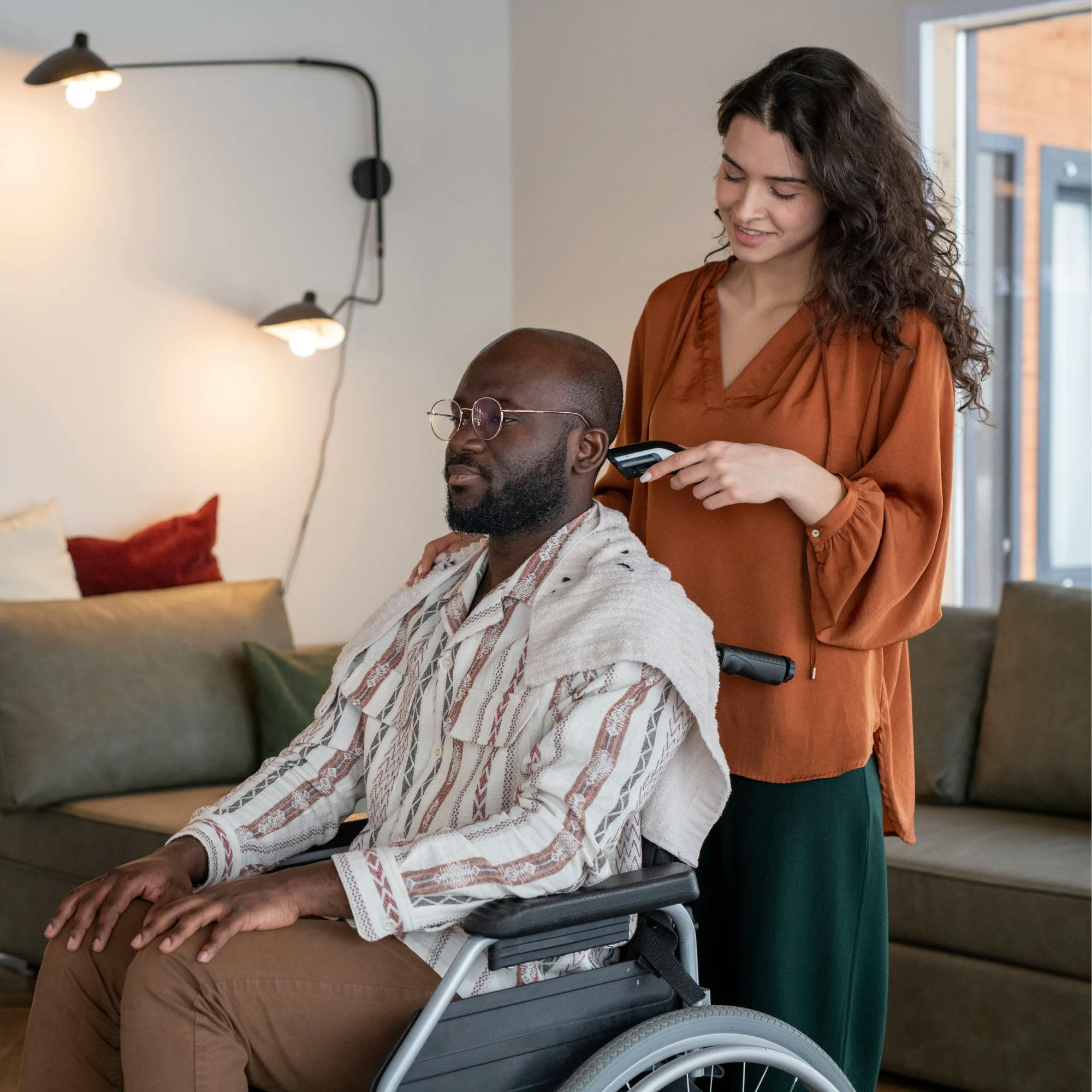
Speech Therapy After a Stroke: What You Need to Know
 Leanne Sherred, M.S., CCC-SLP
Leanne Sherred, M.S., CCC-SLP
Every year, nearly 800,000 people have a stroke in the United States, with over 30% of survivors developing communication problems as a result. A stroke can affect a person’s speech patterns, their language comprehension, as well as their ability to read and write. In this article, we cover the communication-related disorders that typically develop post-stroke and explain how speech therapy can help.
How do strokes affect speech?
While there are different types of strokes, one of the most common is called an ischemic stroke. When an ischemic stroke occurs, the brain’s blood supply is significantly reduced, which prevents vital oxygen and nutrients from reaching the brain. Depending on where the stroke happened in the brain, this damage can lead to a variety of disabilities, including speech and language problems.


Common speech and language problems after a stroke
Brain damage that results from a stroke can affect people differently. Below are three communication disorders that can happen after a stroke. While similar symptoms can present regardless of diagnosis, a thorough evaluation from a doctor or speech-language pathologist can help you make the most informed treatment decisions.
Aphasia: Aphasia is a language disorder that typically results from damage to the left side of the brain, which is responsible for language development and abilities. As a result, it can affect how a person speaks, as well as their ability to process and understand language--for example, putting together words to form coherent sentences, or remembering the names of people, and objects. It’s been estimated that between 25% and 40% of people who've experienced a stroke will acquire aphasia. While aphasia isn’t commonly known, more than 180,000 Americans are diagnosed each year, making it more common than Parkinson’s disease, cerebral palsy, and muscular dystrophy.


Apraxia: The brain sends signals to the muscles in our mouths to help control our speech and make accurate sounds. Apraxia is a neurological condition that disrupts these signals, making it difficult to coordinate these muscle movements. As a result, individuals with acquired apraxia of speech have trouble producing coherent and legible words and sentences. Adults who’ve had a stroke can develop apraxia of speech when the parts of the brain that control these muscle movements are damaged.


Dysarthria: Similar to apraxia, dysarthria can affect an individual’s ability to speak and communicate. However, with dysarthria the mouth muscles involved in the production of speech are weakened or paralyzed. This can affect the speed, rhythm, volume, and quality of your speech, make your speech sound mumbly or choppy, or cause excess drooling. It is estimated that between 8% and 60% of individuals with a stroke will develop dysarthria.
It is important to note that while aphasia, apraxia, and dysarthria are common after a stroke, there are a host of other communication problems that can result from brain damage. This can include difficulty with social or emotional cues, mood or memory problems, and other challenges that affect communication.


How does speech therapy help after a stroke?
Many post-stroke patients will regain much of their normal speech function over time. Others need more intensive treatment to aid in their recovery.
Regardless, if you’ve had a stroke and now have communication problems, your doctor will likely refer you to a speech-language pathologist. Speech therapists are communication experts, and they’ll work with you, your family, and your care team to help you strengthen your communication and regain normal speech abilities.
As mentioned, speech therapy treatment starts with a comprehensive evaluation to assess your speech strengths and deficits, better understand how communication challenges are affecting your everyday life, and diagnose the nature of your problem.
Based on this information and your communication goals, as well as your general health information following a stroke, they’ll develop a personalized treatment plan tailored to your needs. This often involves a variety of speech therapy techniques and practical activities to help you regain your communication skills. If you have dysarthria, therapy can also include physical exercises to rebuild and strengthen the muscles involved in speech.


The role of family and caregivers after a stroke
Progress toward speech therapy goals is often accelatered when other important people in your life are actively involved. Beyond your doctor and other healthcare providers, this can include your spouse, friends and family, and care staff. Your speech therapist will provide you and your loved ones with techniques to help you communicate with each other. They’ll also arm your family with tools, education, and activities so that communication skills can be practiced and reinforced at home throughout your daily life.
Finally, if your verbal communication is severely impacted, they’ll help you find alternative ways to express your thoughts. This is called augmentative and alternative communication (ACC), and it can involve gesturing, electronic devices, whiteboards, picture boards, and more.
How Expressable Can Help
Concerned your child isn't reaching age-expected milestones? Looking for communication support from a professional? Expressable is a national online speech therapy practice serving children and adults. We treat all major areas of communication and feeding, offer flexible hours including evenings and weekends, and accept most major health insurance plans. We’re proud to have earned more than 3,000 5-star reviews from our clients (4.9/5 average).
Our therapy model is centered on parent and caregiver involvement. Research proves that empowering caregivers to participate in their loved one’s therapy leads to better outcomes. That’s why we combine live, 1-on-1 speech therapy with personalized education and home practice activities for faster progress.
Communication is more than words. It’s how we share how we feel and show who we are. We’re here to help you or your child do just that.










